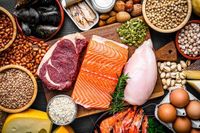The world of food allergies is shifting, and experts say it’s time for Europe’s food labeling laws to catch up. According to recent research from the Allergy Vigilance Network, published in Clinical & Experimental Allergy on August 20, 2025, eight emerging food allergens—currently not subject to mandatory labeling—are implicated in a growing number of severe, sometimes fatal, allergic reactions. With the rising incidence of food-induced anaphylaxis, the call for regulatory reform is growing louder, echoing through scientific circles, public health agencies, and the lived experiences of families affected by unexpected allergic crises.
For years, European and UK regulations have mandated that food packaging highlight 14 major allergens, aiming to protect consumers from hidden dangers lurking in everyday meals. These include the usual suspects: peanuts, eggs, milk, cereals containing gluten, and tree nuts, among others. But as dietary habits evolve and new ingredients find their way into kitchens and processed foods, the list is starting to look outdated. The Allergy Vigilance Network’s analysis of nearly 3,000 anaphylaxis cases reported from 2002 to 2023 shines a harsh light on this gap.
Of those cases, 413—more than one in seven—were triggered by foods that don’t currently require labeling. Even more concerning, two of these cases resulted in fatalities. The data, as reported by Clinical & Experimental Allergy, suggests that the absence of mandatory labeling for certain foods is not a minor oversight, but a potentially deadly one.
So, what are these hidden threats? At the top of the list are goat’s and sheep’s milk, which together accounted for 2.8% of all recorded anaphylaxis cases. That might sound small, but the recurrence rate—a measure of how often the same allergen triggers repeated reactions in the same person—was a staggering 56%. Buckwheat, often used as a gluten-free alternative, was responsible for 2.4% of cases. Pulses like peas and lentils made up 1.8%. Pine nuts, a staple in pesto and Mediterranean dishes, caused 1.6% of reactions. Other emerging allergens include kiwi (1.5%), beehive products like honey and pollen (1%), apple (1%), and alpha-gal, a sugar molecule found in red meat, which accounted for 1.7% of cases.
“We therefore believe it is time to review the list of the 14 foods with mandatory labelling to include at least the most severe of these emerging food allergens,” said Dominique Sabouraud-Leclerc, MD, the study’s lead author, in comments cited by Clinical & Experimental Allergy and the Daily Mail.
Researchers argue for the urgent inclusion of at least four of these foods—goat’s and sheep’s milk, buckwheat, peas and lentils, and pine nuts—on the mandatory allergen labeling list. Their reasoning is grounded in the frequency, severity, and, crucially, the potential for hidden exposure. Many of these ingredients are increasingly common in processed foods or as substitutes in specialty diets, yet their presence is often invisible to consumers.
The case for reform is not just academic. The study’s findings are echoed by high-profile tragedies. In 2016, 15-year-old Natasha Ednan-Laperouse died after eating a baguette containing undeclared sesame seeds. Her death led to the introduction of "Natasha’s Law" in the UK in 2021, which now requires full ingredient and allergen labeling on all pre-packed foods made on premises for direct sale. The lesson is clear: regulatory inertia can cost lives.
“Given the severity and recurrence of anaphylaxis, and the possible presence of the allergen in masked form, we propose that goat’s and sheep’s milk, buckwheat, peas and lentils, and pine nuts be considered for inclusion in the European mandatory labelling of foods list,” the study’s authors concluded, as reported by the Daily Mail.
But the problem goes beyond just adding a few more items to a checklist. The researchers also drew attention to the "hidden" nature of some allergens. Buckwheat, for example, is often marketed as a healthy, gluten-free option, but few consumers are aware of its potential to cause severe allergic reactions. Beehive products, including honey, pollen, and royal jelly, are increasingly popular in health foods, yet they, too, can be dangerous for some.
Alpha-gal, found in red meat, presents a particularly insidious risk. The molecule can trigger delayed allergic reactions hours after consumption, making it difficult to trace the cause. Kiwi and apple, both common fruits, have also emerged as significant allergens in the data.
Symptoms of anaphylaxis are nothing to take lightly. They often appear within minutes of exposure and can include swelling of the throat and tongue, difficulty breathing, fainting, and, in severe cases, death. The most effective treatment is an injection of adrenaline, which is why those with known allergies are advised to carry an auto-injector like an EpiPen.
Dr. James Cooper of the UK’s Food Standards Agency told the BBC, “This is why pre-packed foods must list all ingredients, why food businesses must provide clear information about allergens and why we encourage consumers to speak up about their allergens.” His comments reflect a growing consensus that consumer awareness and industry transparency are both vital—but they are only as effective as the regulations that support them.
It’s not just about protecting those with known allergies, either. As the researchers noted, many people discover their sensitivities only after a reaction. The hidden presence of allergens in foods—sometimes as minor ingredients or as contamination—means that clear, comprehensive labeling is a public health imperative.
Currently, European regulations require food businesses to highlight 14 major allergens, including celery, cereals containing gluten, crustaceans, eggs, fish, lupin, milk, molluscs, mustard, peanuts, sesame, soybeans, sulphur dioxide, and tree nuts. But as the Allergy Vigilance Network’s study shows, the list is no longer sufficient.
The researchers’ call to action is not just for policymakers. Food manufacturers are urged to adopt transparent labeling practices that go beyond minimum legal requirements. Healthcare providers and consumer advocates are encouraged to educate the public about emerging risks. And consumers themselves have a role to play by demanding clearer information and advocating for safer food choices.
The stakes are high, but the path forward is clear. The emerging picture is one of a food landscape that is constantly evolving—sometimes in ways that outpace the rules meant to keep us safe. By updating allergen labeling laws to reflect new scientific findings, Europe can take a decisive step toward protecting its most vulnerable citizens.
As the debate continues, one thing is certain: the days when potentially dangerous allergens could slip through regulatory cracks must come to an end. With vigilance, transparency, and a willingness to adapt, a safer future for food allergy sufferers is within reach.

